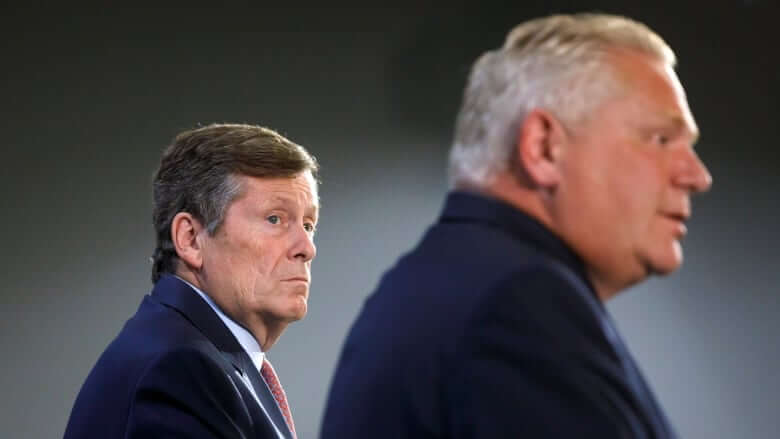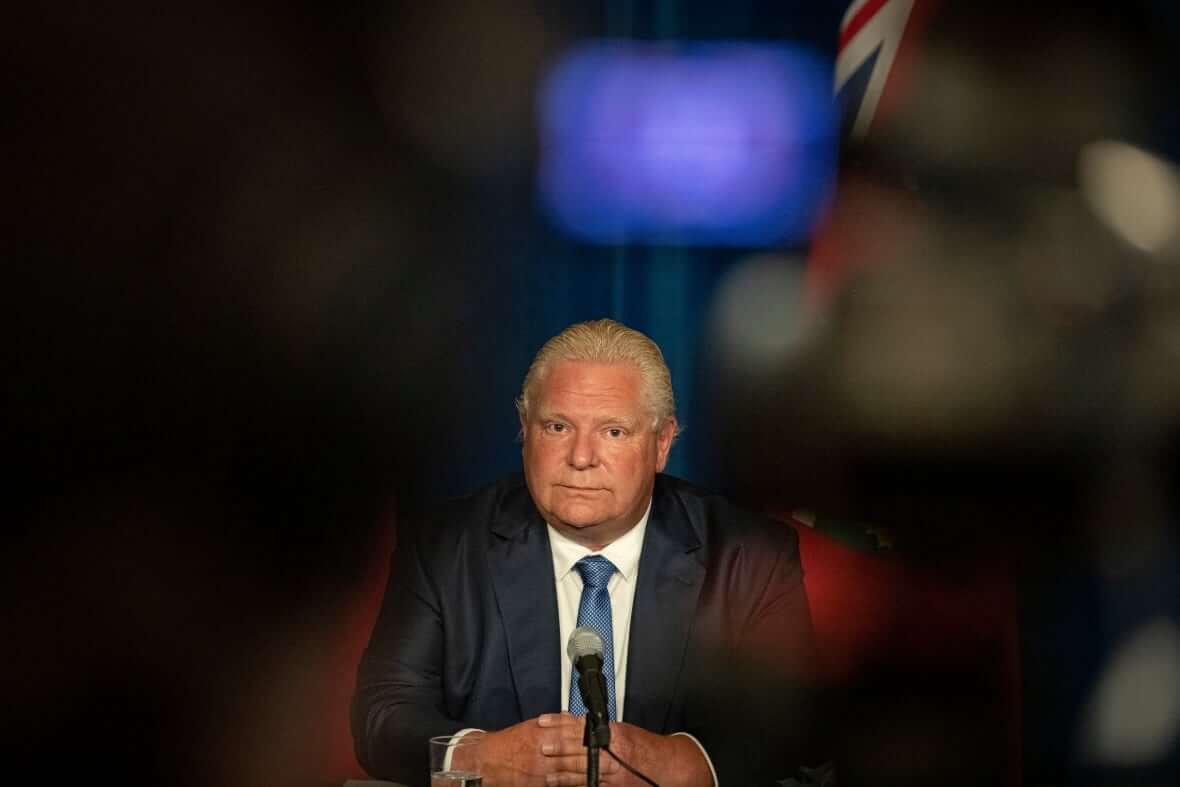Ford government had right to cut number of Toronto wards during 2018 election, Supreme Court rules

Ontario Premier Doug Ford’s Progressive Conservative government was operating within its legal powers when it cut the number of wards in Toronto in the middle of the 2018 municipal election, the Supreme Court of Canada has ruled.
In a 5-4 split decision, Canada’s top court said Ontario did not violate the Constitution when it cut the number of wards from a planned 47-ward system to 25 wards that would align geographically with provincial and federal ridings.
The City of Toronto argued that by cutting the number of wards in Toronto after the nomination period for elections to city council had passed, the province violated the Constitution because it limited the rights of candidates and trampled on the unwritten constitutional principle of democracy.
“None of these arguments have merit, and we would dismiss the city’s appeal. In our view, the province acted constitutionally,” Chief Justice Richard Wagner and Justice Russell Brown wrote in their majority decision.
But in a dissenting opinion, Justice Rosalie Silberman Abella wrote that revamping the electoral process in the middle of an election was unconstitutional.
In dismissing the City of Toronto’s appeal, the court said that the usefulness of unwritten principles of democracy defended by the Constitution is limited to helping courts interpret the law.
“But it cannot be used in a manner that goes beyond this interpretive role. In particular, it cannot be used as an independent basis to invalidate legislation,” Justices Wagner and Brown wrote.
Freedom of expression not compromised: ruling
The court also ruled that cutting the wards did not limit municipal candidates’ right to freedom of expression during the election because, despite the timing of the changes, candidates had plenty of time to adjust their campaigns.
“The candidates and their supporters had 69 days — longer than most federal and provincial election campaigns — to re-orient their messages and freely express themselves according to the new ward structure.”

The court said that while enlarging wards and changing boundaries meant some of the candidates’ campaign literature and policies had to be revised or thrown out, campaigns were given higher spending limits and had time to raise funds for new materials.
But writing on behalf of the minority, Abella disagreed, saying that the question of timing was critical to the case.
Abella said that moving the goalposts when an election “was technically 60 per cent complete” hurt candidates’ campaigns and that extending nominations from July 27 to Sept. 14 did not provide enough time “undo the damage and uncertainty that the change had created for candidates.”
“By radically redrawing electoral boundaries during an active election that was almost two-thirds complete, the legislation interfered with the rights of all participants in the electoral process to engage in meaningful reciprocal political discourse,” she wrote.
Councillors slam decision
Critics were quick to denounce the court’s decision Friday morning. On Twitter, Ward 14 Coun. Paula Fletcher called it a “sad day” while Ward 8 Coun. Mike Colle said it was a “disgusting day for local democratic government.”
Similarly, former Toronto Mayor David Miller called the decision “disappointing news” that is “inconsistent with the modern reality of city governments.”
“Judged by its responsibilities, it’s budget and population served, Toronto is bigger and more relevant to people’s daily lives than most provinces,” Miller said.
In a statement issued Friday morning, provincial Liberal Leader Steven Del Duca also said he was disappointed by the court’s decision.
“While the ruling comes as a shock to those who fought against Ford’s 2018 municipal meddling, the damage had already been done,” he said.
“Millions of people have gone years without the level of representation they deserved, all because of a premier who will do anything to get his way.”
Mayor John Tory, however, struck a more conciliatory tone, and thanked the court in a statement for its consideration of the city’s appeal.
He said he disagreed with the way the province made its changes but said the city and the provincial government “will continue our work together on responding to the COVID-19 pandemic and many other issues for the good of our city and our province.”
Ford accused at the time of undermining democracy
Ford announced his decision to chop the number of Wards in the middle of the 2018 municipal election campaign.
At the time, Ford, a former Toronto city councillor and failed mayoral candidate, said the move would improve decision-making and save $25 million.
In a column published in the Toronto Sun, he said Toronto has “a bloated and inefficient council where debates can go on for days but no decisions ever get made.”
Critics accused him of political interference and undermining democracy.
A provincial judge found the law unconstitutional, saying it infringed on the free-expression rights of candidates by affecting their ability to campaign, and those of voters by denying them the right to cast a ballot that could result in effective representation.

Ford then announced plans to use the Constitution’s notwithstanding clause to forge ahead with the move. The clause gives provincial legislatures and Parliament the ability to override provisions in the Charter of Rights and Freedom when implementing legislation, but only for a five-year period.
In the end, Ford did not have to use the clause. The Ontario Court of Appeal issued an interim stay of the initial court decision and the election took place with 25 wards and the revised boundaries.
In September 2019, the Ontario Court of Appeal ruled in a 3-2 decision that changing the composition of a city council is “undeniably within the legitimate authority of the legislature”
But the two dissenting judges suggested there were serious issues with the election process after the Ford government imposed the changes, calling them “extensive, profound, and seemingly without precedent in Canadian history.”
The following month, the City of Toronto filed an application with the top court asking it for leave to appeal the province’s decision to slash the size of council.
Candidates, voters were disadvantaged: city
In a written submission to the Supreme Court, Toronto said the ward changes disrupted the election and created confusion among candidates and voters.
Candidates complained that they had made efforts to campaign in parts of the city that were no longer in their ward and that they did not campaign in areas of the city where they suddenly had to seek votes.
The submission said that when ward sizes almost doubled, voters were no longer sure which ward they were in or who was running.
The Ontario government, meanwhile, said in its filing to the Supreme Court that voters and candidates had all the necessary information on everyone who was running in each ward and that the election proceeded freely, openly and fairly.








Redes Sociais - Comentários